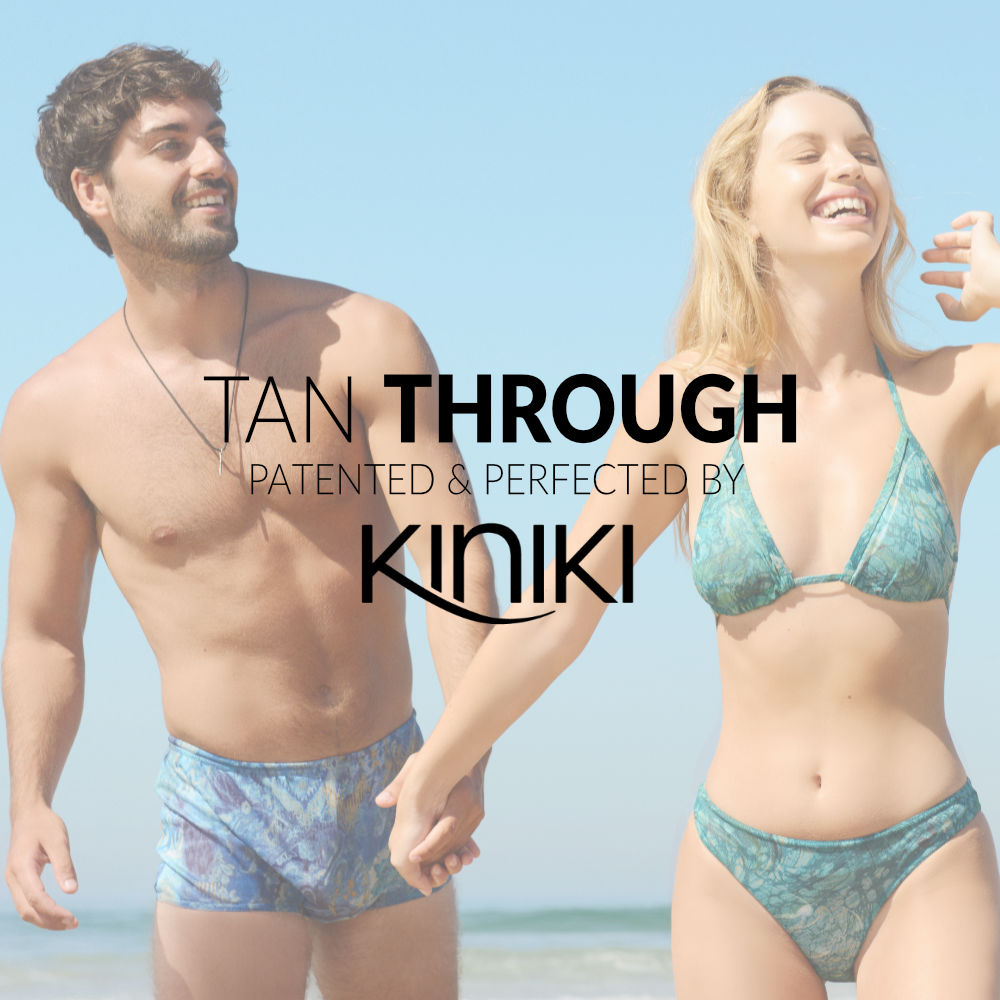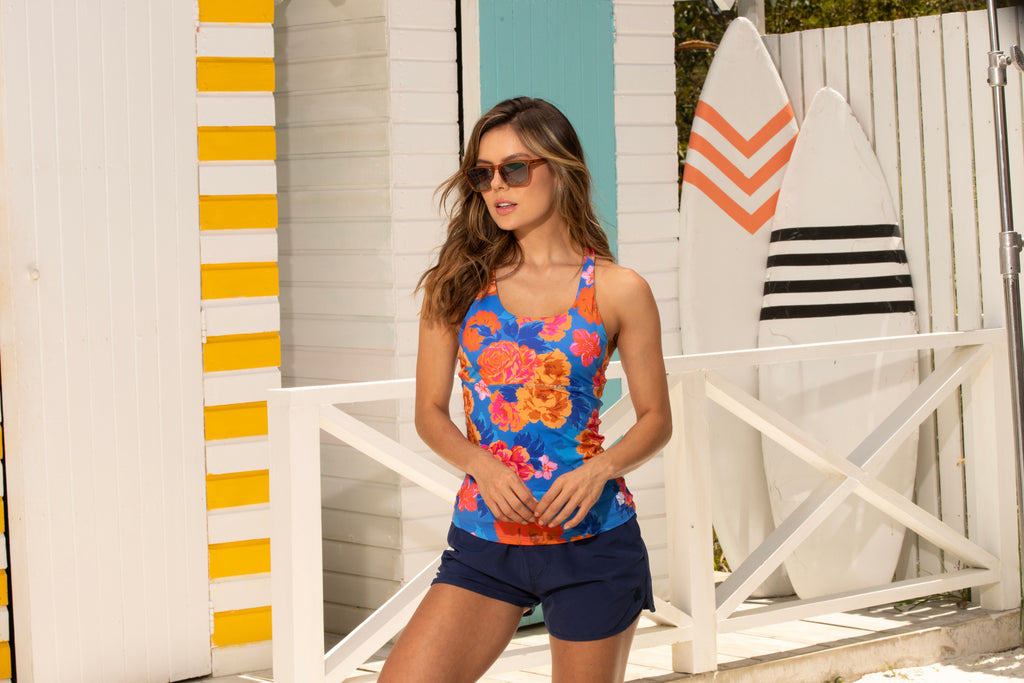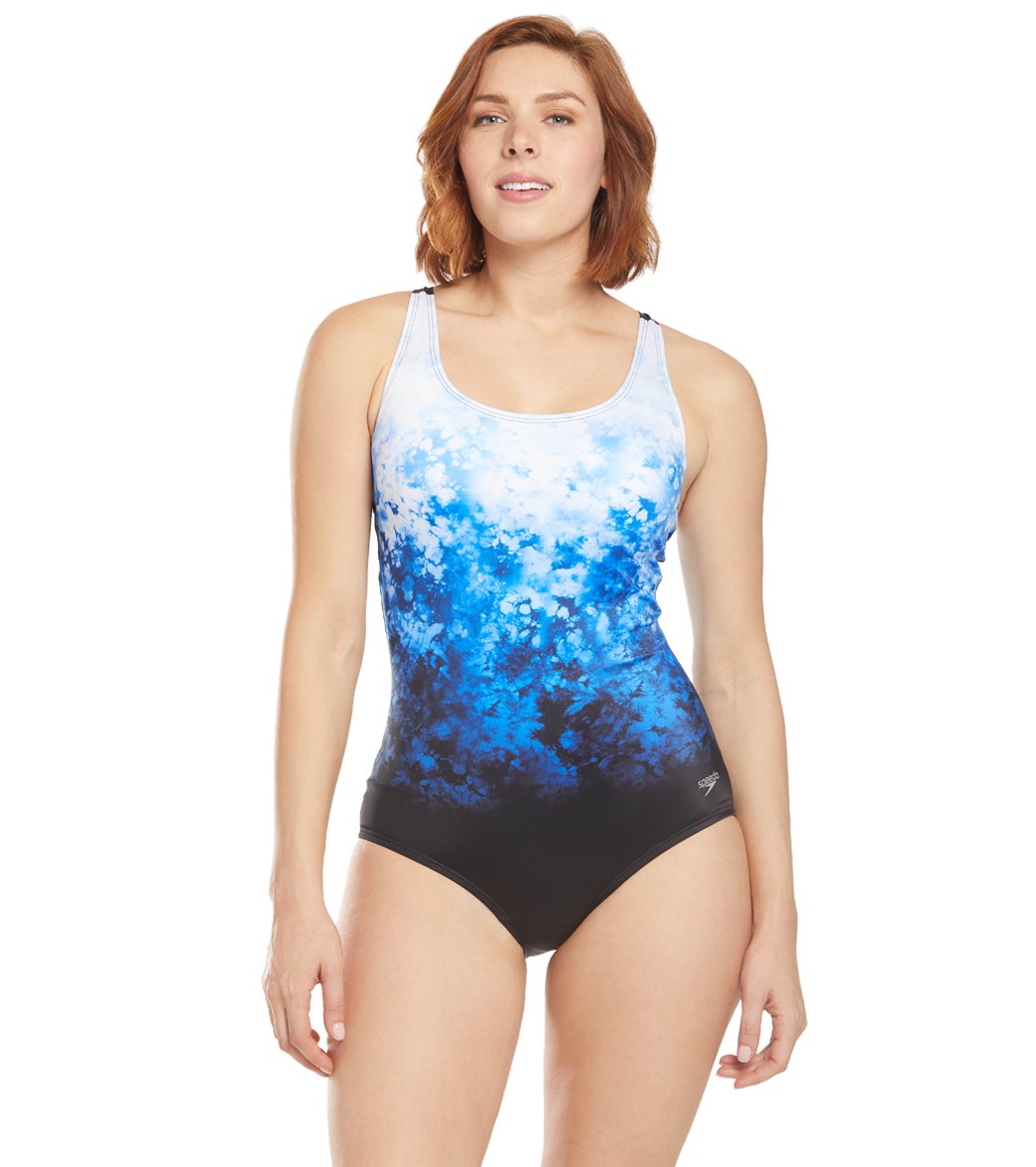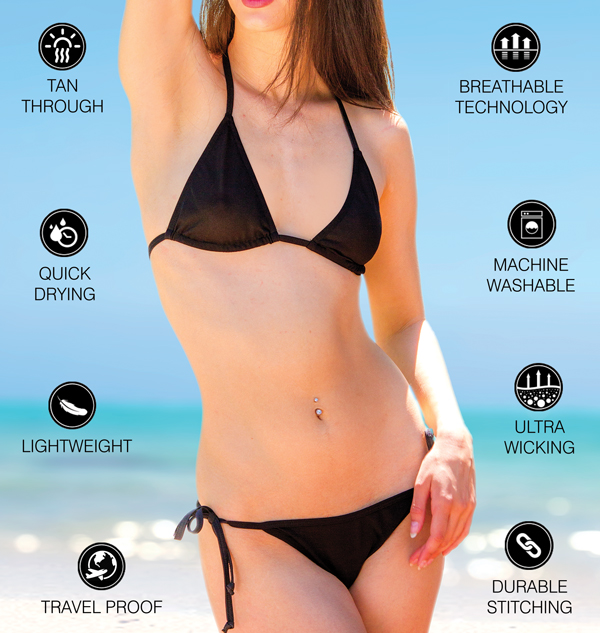Content Menu
● Understanding Tan-Through Swimwear
● Key Differences Between Tan-Through and Regular Swimwear
● Benefits of Tan-Through Swimwear
● Potential Drawbacks
● How Tan-Through Swimwear Works
>> Video Demonstration
● Choosing the Right Tan-Through Swimwear
● The Science Behind Tan-Through Technology
● Consumer Feedback on Tan-Through Swimwear
● Caring for Your Tan-Through Swimwear
● Sun Safety Considerations
● Frequently Asked Questions (FAQs)
>> 1. Do I still need sunscreen with tan-through swimwear?
>> 2. Can I wear tan-through swimwear for water sports?
>> 3. Will my skin get sunburned under tan-through fabric?
>> 4. Is tan-through swimwear see-through when wet?
>> 5. How do I care for my tan-through swimsuit?
● Conclusion
● Citations:
Swimwear has evolved significantly over the years, catering to various needs and preferences. One of the latest innovations in swimwear technology is tan-through swimwear, which allows wearers to achieve an even tan without the hassle of tan lines. In this article, we will explore the differences between tan-through swimwear and regular swimwear, discussing their unique features, benefits, and potential drawbacks.

Understanding Tan-Through Swimwear
Tan-through swimwear is designed with a special fabric that contains microscopic pores, allowing UV rays to penetrate while still providing coverage. This innovative design enables wearers to tan even in areas covered by their swimsuits, eliminating the stark contrast of tan lines that traditional swimwear often leaves behind.
- Fabric Technology: The fabric used in tan-through swimwear is often referred to as "Transol" or "techno fabric." This material is engineered to let up to 80% of UV rays pass through while remaining opaque. The microscopic holes are so small that they are invisible to the naked eye, ensuring modesty while allowing for tanning.
- Sun Protection: While tan-through swimwear allows for tanning, it typically provides some level of sun protection, equivalent to SPF 6-10. This means that while you can achieve a more even tan, it's still essential to apply sunscreen on exposed areas for adequate protection against harmful UV rays.
Key Differences Between Tan-Through and Regular Swimwear
| Feature | Tan-Through Swimwear | Regular Swimwear |
| UV Ray Penetration | Allows up to 80% of UV rays through | Blocks most UV rays |
| Tan Lines | Minimizes or eliminates tan lines | Often results in distinct tan lines |
| Fabric Composition | Made from specialized fabrics with microscopic pores | Typically made from thicker materials like Lycra or nylon |
| Sun Protection Factor | Provides low SPF (6-10) | Varies widely; some offer high SPF protection |
| Comfort and Breathability | Lightweight, breathable, and quick-drying | Varies; some may be heavier and less breathable |
| Style Variety | Available in various styles but may have limited patterns | Wide variety of styles and patterns available |
Benefits of Tan-Through Swimwear
1. Even Tanning: The primary advantage of tan-through swimwear is its ability to provide an even tan without the need to remove your swimsuit. This is particularly appealing for those who want to avoid unsightly tan lines.
2. Versatile Styles: Tan-through swimwear comes in various styles, including bikinis, one-pieces, and swim shorts. This versatility allows wearers to choose designs that suit their personal style while still achieving an all-over tan.
3. Time Efficiency: With tan-through swimwear, there's no need to constantly adjust your suit or flip over to ensure even tanning. This feature saves time and allows you more time to enjoy your day at the beach or pool.
4. Comfortable Fit: Many brands offer tan-through fabrics that are lightweight and quick-drying, making them comfortable for extended wear both in and out of the water.
5. Fashion Forward: Tan-through swimwear is available in a range of colors and patterns, allowing wearers to express their style without sacrificing functionality.

Potential Drawbacks
While there are many benefits to tan-through swimwear, there are also some considerations:
- Limited Sun Protection: Although it provides some level of sun protection, it is much lower than traditional swimsuits. Wearers should still apply sunscreen on exposed skin.
- Transparency Concerns: Depending on the design and color of the fabric, some users may find that certain styles can be slightly transparent when wet. Choosing busy patterns can help mitigate this issue.
- Durability: Some users report that tan-through fabrics may not be as durable as traditional swimwear materials, especially after multiple washes or exposure to chlorine.
How Tan-Through Swimwear Works
Tan-through swimwear utilizes a unique knitting process that creates millions of tiny holes in the fabric. These holes allow sunlight to penetrate while keeping the material opaque enough for modesty. The combination of polyester and elastane fibers ensures that the suit remains stretchy and comfortable while facilitating tanning.
Video Demonstration
For a visual representation of how tan-through swimwear works and its effectiveness in achieving an even tan without lines, check out this informative video [here](https://www.youtube.com/watch?v=SY37zxytoYs).
Choosing the Right Tan-Through Swimwear
When selecting tan-through swimwear, consider the following factors:
1. Style Preference: Choose a style that fits your body type and personal taste—whether it's a bikini, one-piece, or tankini.
2. Pattern Selection: Opt for patterns that provide more coverage if you're concerned about transparency when wet.
3. Brand Reputation: Look for reputable brands known for quality materials and effective designs.
4. Size & Fit: Ensure you select the correct size for comfort and functionality; many brands provide size guides on their websites.
5. Care Instructions: Follow care instructions carefully to maintain the integrity of the fabric over time.
The Science Behind Tan-Through Technology
The technology behind tan-through swimwear is remarkable. It involves weaving a special blend of polyester-elastane threads in such a way that they create an irregular diagonal pattern. This design allows for an extremely light yet stretchy fabric with threads spaced apart more than in traditional polyester swimsuit fabrics. As a result, up to 80% of sunlight can pass through these micro-holes without compromising coverage or comfort[6].
Moreover, many brands claim their fabrics contain built-in SPF protection against harmful UVB rays while allowing UVA rays through for tanning purposes[3][4]. This dual benefit means wearers can enjoy sun exposure safely while working on their tans.

Consumer Feedback on Tan-Through Swimwear
Despite its innovative design, consumer feedback on tan-through swimwear has been mixed:
- Some users rave about how effective these suits are at providing an even tan without noticeable lines.
- Others have reported dissatisfaction due to unexpected transparency when wet or thick seams causing distinct lines where traditional swimsuits would not leave any[1][6].
Social media platforms like TikTok have seen a surge in reviews—both positive and negative—regarding various brands of tan-through swimwear[1]. Videos showcasing unboxing experiences and hour-by-hour tanning results have garnered millions of views; however, many users caution against believing every glowing review due to sponsored content influencing perceptions[1].
Caring for Your Tan-Through Swimwear
To ensure longevity and maintain performance:
1. Hand Wash Only: It's recommended to hand wash your tan-through swimsuit in cold water with mild detergent rather than machine washing it.
2. Avoid Chlorine Exposure: If possible, avoid prolonged exposure to chlorinated water as it can degrade the fabric over time.
3. Rinse After Use: Always rinse your swimsuit after swimming in saltwater or chlorinated pools to remove any residues that could affect its integrity.
4. Drying Instructions: Air dry your swimsuit away from direct sunlight; do not tumble dry as this can damage the delicate fibers[2][4].
Sun Safety Considerations
While enjoying sun exposure with tan-through swimwear:
- Always apply sunscreen on areas not covered by your swimsuit.
- Reapply sunscreen every two hours or immediately after swimming.
- Monitor your skin for any signs of overexposure or irritation.
By practicing safe sun habits alongside using innovative products like tan-through swimwear, you can enjoy both beauty and health during your beach days.

Frequently Asked Questions (FAQs)
1. Do I still need sunscreen with tan-through swimwear?
Yes, it's essential to apply sunscreen on exposed skin as tan-through swimwear provides limited protection against UV rays.
2. Can I wear tan-through swimwear for water sports?
Yes, many brands design their suits for active use; however, check specific product descriptions for suitability in water sports.
3. Will my skin get sunburned under tan-through fabric?
There is a risk of sunburn if you do not apply sunscreen; always protect your skin adequately.
4. Is tan-through swimwear see-through when wet?
Some styles may become slightly transparent when wet; choosing darker or busier patterns can help reduce visibility.
5. How do I care for my tan-through swimsuit?
Hand wash in cold water with mild detergent; avoid machine washing and tumble drying as it can damage the fabric's integrity.
Conclusion
Tan-through swimwear represents an innovative approach to enjoying sunbathing without the worry of unsightly tan lines. While it offers unique benefits such as even tanning and stylish designs, it's crucial for users to remain vigilant about sun protection and fabric care. As you consider your next swimsuit purchase, weigh these differences carefully to find what best suits your lifestyle and tanning goals.
Citations:
[1] https://www.yahoo.com/lifestyle/tiktok-famous-tan-swimwear-gives-201955597.html?guccounter=1
[2] https://toptanswimwear.com/pages/faq
[3] https://swimsuit.si.com/swimlife/heres-what-no-tan-line-bathing-suits-are-and-why-theyre-trending-on-tiktok
[4] https://www.abelyfashion.com/what-is-tan-through-swimwear.html
[5] https://tan-throughswimwear.com
[6] https://www.ishine365.com/blogs/to-know-about-swimwear/do-tan-through-swimsuits-really-work
[7] https://www.truetoneswim.com



































































